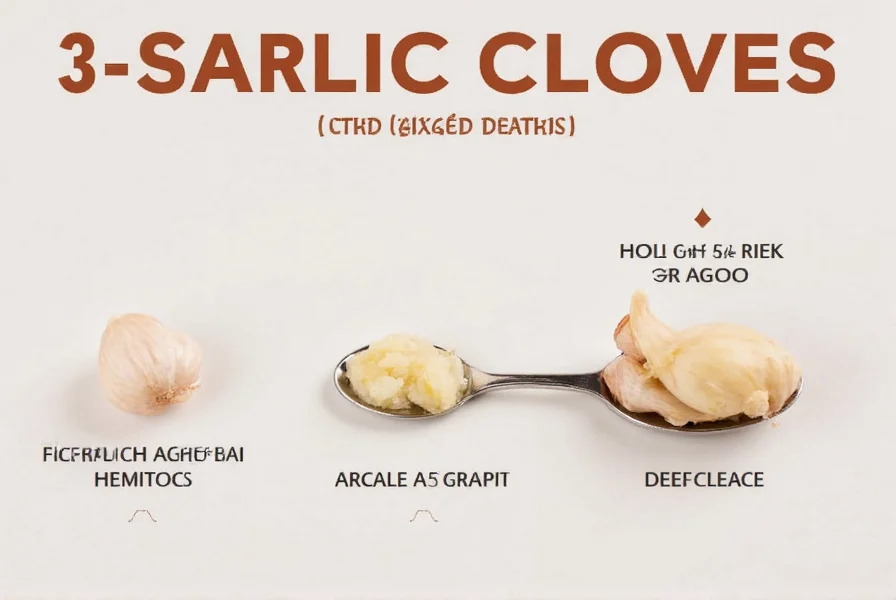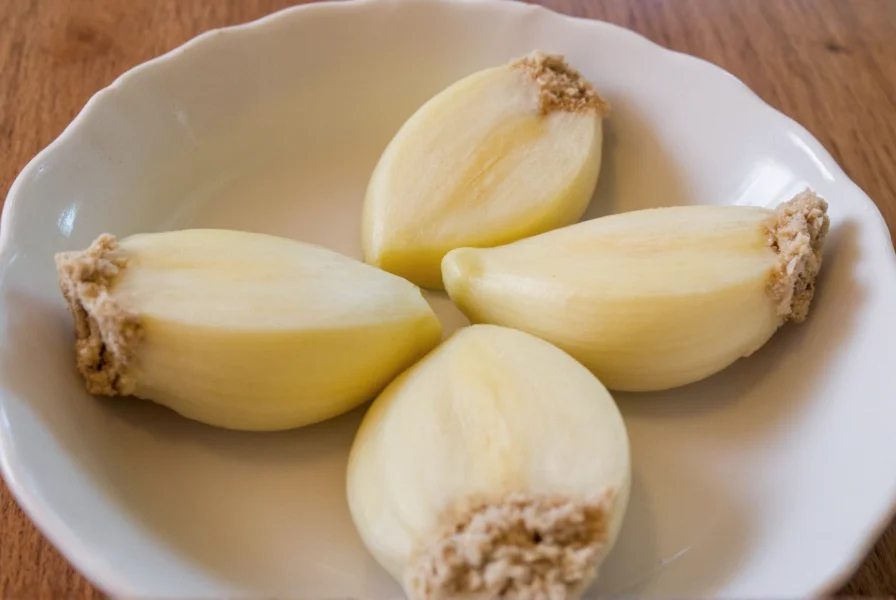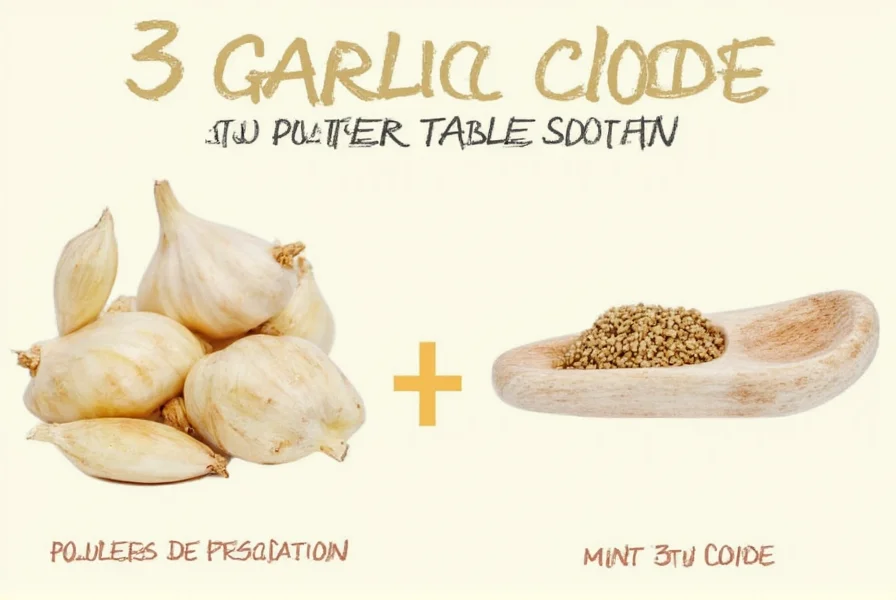Understanding garlic measurements is crucial for home cooks and professional chefs alike. When recipes specify garlic in tablespoons but you're working with whole cloves, knowing the proper conversion ensures your dishes achieve the intended flavor profile without overpowering or underwhelming your palate.
Factors Affecting Garlic Measurement
The exact number of garlic cloves per tablespoon isn't fixed due to several variables. Garlic cloves naturally vary in size—from small (¼ inch diameter) to large (¾ inch diameter). A single large clove can yield as much as 1½ teaspoons of minced garlic, while a small clove might produce only ¼ teaspoon.
Preparation method significantly impacts volume too. Minced garlic packs more densely than roughly chopped pieces. Garlic pressed through a press contains more air and measures differently than hand-minced garlic. The moisture content of fresh garlic also affects how it compacts when measured.
| Garlic Clove Size | Minced Garlic Yield | Cloves Per Tablespoon |
|---|---|---|
| Small (¼" diameter) | ¼ teaspoon | 12 cloves |
| Medium (½" diameter) | ½ teaspoon | 6 cloves |
| Large (¾" diameter) | 1½ teaspoons | 2 cloves |
Practical Measurement Techniques
For the most accurate results in your cooking, consider these practical approaches to measuring garlic. When precision matters—such as in delicate sauces or baking—use a kitchen scale. One tablespoon of minced garlic weighs approximately 9 grams.
Visual estimation works well for everyday cooking. Picture a medium garlic clove as roughly the size of your fingertip from the first knuckle to the tip. When minced, this should fill about half a standard teaspoon measure. For one tablespoon, you'll need enough minced garlic to fill the spoon without mounding.

Culinary Considerations for Garlic Measurements
Garlic's potency varies throughout the year and by variety. Spring garlic tends to be milder than cured garlic stored for months. Hardneck varieties often have more intense flavor than softneck types. When converting measurements, consider whether your recipe accounts for these variations.
For dishes where garlic plays a starring role—like aioli, pesto, or garlic bread—consider tasting as you go. The chemical reaction that creates garlic's characteristic flavor compounds continues after mincing, intensifying over the first 10 minutes. Adding garlic early in cooking mutes its sharpness through caramelization, while adding it near the end preserves its pungency.
When substituting jarred minced garlic for fresh cloves, remember that commercial products often contain citric acid or other preservatives that alter both flavor and measurement. Typically, ½ teaspoon of jarred garlic equals one fresh medium clove, but always check the product's specific conversion guide.
Garlic Measurement Shortcuts for Busy Cooks
Pre-mincing garlic and storing it in olive oil extends its usability while providing ready-to-measure garlic. One ice cube tray section filled with this mixture equals approximately one tablespoon. Freeze in portions that match common recipe requirements for effortless cooking.
For quick reference while cooking, memorize these simple conversions: six medium cloves equal two tablespoons (one fluid ounce), while three medium cloves equal one tablespoon. When working with large quantities, remember that one whole garlic bulb (typically 10-12 cloves) yields approximately ¼ cup of minced garlic.

FAQ Section
How many garlic cloves equal one teaspoon of minced garlic?
One medium garlic clove yields approximately ½ teaspoon of minced garlic. Therefore, two medium cloves equal one teaspoon. For small cloves, you'll need four to make one teaspoon, while large cloves require only two-thirds of a clove per teaspoon.
Does roasted garlic measure the same as raw garlic?
No, roasted garlic measures differently than raw garlic. The roasting process reduces moisture content and causes cloves to shrink. One roasted medium clove yields about ¼ teaspoon of garlic pulp, meaning you'll need approximately six roasted cloves to equal one tablespoon, compared to three raw medium cloves.
Can I use garlic powder instead of fresh cloves?
Yes, but the conversion differs significantly. As a general rule, ⅛ teaspoon of garlic powder equals one fresh medium garlic clove. Therefore, ½ teaspoon of garlic powder substitutes for one tablespoon of minced fresh garlic. Remember that garlic powder has a more concentrated flavor, so adjust according to your taste preferences.
Why does my garlic measurement seem off even when following conversions?
Several factors can affect garlic measurements: natural size variations between cloves, differences in mincing technique, moisture content based on freshness, and even the variety of garlic. For critical recipes, consider weighing your garlic (1 tablespoon = approximately 9 grams) or tasting as you incorporate it to achieve your desired flavor intensity.
How should I store pre-minced garlic for accurate future measurements?
Store pre-minced garlic in small, labeled portions in the refrigerator for up to one week or freeze for longer storage. Mix with a small amount of olive oil to prevent browning. Use standardized containers like ½ teaspoon or 1 tablespoon portions. When frozen, these portions maintain consistent volume for accurate measurement in future recipes.











 浙公网安备
33010002000092号
浙公网安备
33010002000092号 浙B2-20120091-4
浙B2-20120091-4